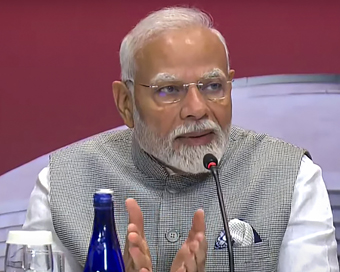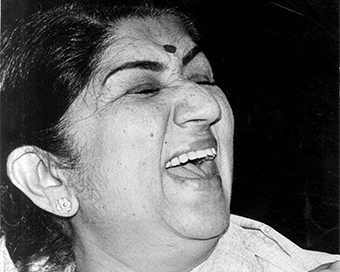 PM Modi visit USA
PM Modi visit USA Only the mirror in my washroom and phone gallery see the crazy me : Sara Khan
Only the mirror in my washroom and phone gallery see the crazy me : Sara Khan Karnataka rain fury: Photos of flooded streets, uprooted trees
Karnataka rain fury: Photos of flooded streets, uprooted trees Cannes 2022: Deepika Padukone stuns at the French Riviera in Sabyasachi outfit
Cannes 2022: Deepika Padukone stuns at the French Riviera in Sabyasachi outfit Ranbir Kapoor And Alia Bhatt's Wedding Pics - Sealed With A Kiss
Ranbir Kapoor And Alia Bhatt's Wedding Pics - Sealed With A Kiss Oscars 2022: Every Academy Award Winner
Oscars 2022: Every Academy Award Winner Shane Warne (1969-2022): Australian cricket legend's life in pictures
Shane Warne (1969-2022): Australian cricket legend's life in pictures Photos: What Russia's invasion of Ukraine looks like on the ground
Photos: What Russia's invasion of Ukraine looks like on the ground Lata Mangeshkar (1929-2022): A pictorial tribute to the 'Nightingale of India'
Lata Mangeshkar (1929-2022): A pictorial tribute to the 'Nightingale of India' PM Modi unveils 216-feet tall Statue of Equality in Hyderabad (PHOTOS)
PM Modi unveils 216-feet tall Statue of Equality in Hyderabad (PHOTOS)Hockey India has announced a 54-member core probable squad for the upcoming senior men’s
- Satwik-Chirag return as BAI names 14-strong squad for BWF Sudirman Cup Finals 2025
- Men’s Sr Hockey Nationals to be played in division-based format from April 4
- Mensik denies Djokovic 100th title in Miami final
- KIPG: Son of a vegetable vendor, Bihar’s Jhandu Kumar eyes Worlds, 2028 Paralympics
- Hardik Singh credits hard work and team unity for receiving HI Midfielder of the Year award
Google remembers Soviet filmmaker, montage-master Eisenstein Last Updated : 22 Jan 2018 02:32:35 PM IST 
Google remembers Soviet filmmaker, montage-master Eisenstein
Google on Monday honoured Soviet film director and father of montage in filmmaking Sergei Eisenstein on his 120th birth anniversary with a doodle.
The doodle shows a series of film rolls in movement depicting iconic imagery in some of Eisenstein's films. It is a reminder of
his enduring contributions to cinema.
A closer look into the doodle shows sequencing of a number of images in a continuous loop creating the effect of a montage.
The doodle also shows Sergei Eisenstein, holding a film roll and a scissors depicting a cut or an edit.
The Russian genius changed the way films were made as early as in the 1920s.
The avant-garde filmmaker was born on this day in 1898. He left behind a rich legacy that is complex and in many ways,
immeasurable.
Film montage is an editing technique that pieces together a series of frames to form a continuous sequence that is used at
several defining moments in films -- you can easily recall some of it in "The Godfather", "The Karate Kid", that was refined in
the early 20th century by the Soviet director.
Born in Latvia, young Eisenstein started off in the footsteps of his father and took up architecture and engineering, he later
joined the Red Army to serve the Bolshevik Revolution.
During this time, he developed an interest in theatre and started working as a designer in Moscow.
Eisenstein's films are politically loaded and they galvanised cinema of the former Soviet Union and beyond with their bold
narrative approach, stylistic flourishes, dramatic use of cinematography, editing and music, and marriage between ideology
and the craft of filmmaking.
"Strike" in 1925, "Battleship Potemkin" (1925), "October" (1928), "Que viva México!" (1930, released in 1979), "Alexander
Nevsky" (1938) and "Ivan The Terrible" (1944 and 1958)demonstrate Eisenstein's genius, his contributions to the art of
editing through his theories on montage, and his ability to transcend propaganda to create enduring art.
Describing his cinematic vision, Google said, "His films were also revolutionary in another sense, as he often depicted the
struggle of downtrodden workers against the ruling class."
He was only 50, when he died following a heart attack on February 11, 1948.IANS For Latest Updates Please-
Join us on
Follow us on








172.31.16.186







